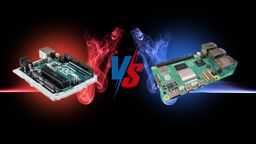Arduino motherboards are open software and hardware and imitations have proliferated in recent years. Users can identify them with a few simple tricks.
Arduino was born with a purpose very similar to Raspberry Pi. The goal was to build devices that would be used primarily in technology and programming classrooms. Community maker He soon joined this system that has evolved over decades.
Arduino allows you to create a mini PC and perform tasks such as controlling an LED light or designing a home server. This type of motherboard has free hardware and software, so other manufacturers can use them as an example to design their models.
The company has the Arduino IDE (Integrated Development Environment) platform, from which Users can create and manage applications for the board. The ease of management has made it famous and it has ended up overcoming the classic BASIC Stamp that cost more than one hundred euros when these devices were born.
Arduino allows you to connect peripherals to the inputs and outputs of the reprogrammable microcontroller. These circuits can record instructions written in programming language that are launched from Arduino IDE. The information from the peripherals is transferred to the microcontroller, which processes the data it receives.
How to identify fake Arduino boards?
Arduino boards are open source, so countless brands have decided to create similar projects. The original models include a free hardware license, so other manufacturers have modified their features or added new functionalities to the microcontroller.
The only requirement imposed by the company is that third-party plates do not use its logo. So are Arduino copies legal? Clones that comply with the approval of the original brand and do not integrate its logo are completely legal.
Companies have perfected Arduino-mimicking devices to the point of causing some confusion among customers. The differences between the original model and the third-party motherboard are subtle, but relatively easy to spot:
- Logo: the original Arduino boards integrate the brand logo on the microcontroller and the “Registered ®” label. The clones They will omit the word “Arduino” and fakes may have the logo and label in a different font or use the “registered trademark (™)” symbol.
- Model Name: The original plate will include the model name in bold, while replicas and fakes may have it surrounded by dots.
- Color: Arduino microcontrollers have a teal or light blue hue for older ones. The imitations have own colors and illustrations and fakes tend to use a dark blue.
- LED Light: Arduino boards include a green LED light for older models that changed to yellow during certain operations and models have RGB LEDs. Fake plates only have red LEDs.
The aesthetic appearance of the motherboard offers some clues, but the packaging can also help identify a fake Arduino board. The brand includes a colored diagram next to the model specifications on the back of the box.
Third-party manufacturers don’t spend as much time at the checkout and ship packages in poorer quality packaging. These plates can be shipped in bubble bags or boxes which look more economical that do not include a diagram, has reported XDA Developers.
If aesthetics are not enough, The original boards will automatically connect to IDE and assign the correct name from the “Get board information” option in the “Tools” section. Imitations often include a cheaper CH340G chip that will display an “Unknown on board” message if you don’t install the necessary drivers.




![[Img #74662]](https://thelatestnews.world/wp-content/uploads/2024/12/Organisms-with-the-shortest-life-150x150.jpg)








![[Img #74662]](https://thelatestnews.world/wp-content/uploads/2024/12/Organisms-with-the-shortest-life-300x200.jpg)


Add Comment